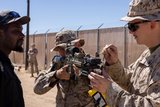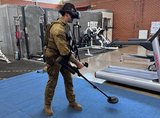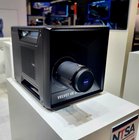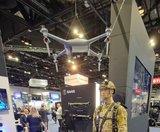Rockwell Collins to continue CRIIS work
Rockwell Collins will support the second production lot of the Common Range Integrated Instrumentation System (CRIIS) for upgrading US Army, US Navy and US Air Force test ranges under a $21 million contract from the US Department of Defense (DoD). The award was announced on 11 April.
CRIIS will replace the Advanced Range Data System and Air-to-Air Range Infrastructure systems currently in use at major US military test ranges.
This second production lot will aid the completion of range installations and activations at Eglin Air Force Base (AFB), Edwards AFB, Naval Air Station Patuxent River, White Sands Missile Range, Nellis AFB, Naval Air Weapons Station China Lake and NAS Point Mugu.
The next-generation test range instrumentation system provides multi-level security and data link capabilities, allowing F-35 and other fighter aircraft to perform several missions in a single day by transferring connectivity to multiple ranges versus a traditional test mission which consists of an exclusive base-to-aircraft data link. The CRIIS system will support developmental and operational testing with the named test ranges, and is ready to support F-15, F-16, and F/A-18, F-22 and F-35 in live, virtual and constructive test scenarios.
The CRIIS programme meets the DoD's goal of common test and training infrastructure for improved operational realism by providing real-time tracking of air exercise participants up to approximately 350 nautical miles (line-of-sight plus relay); accurate time, space, position information under highly-dynamic aircraft conditions and an extended area control of air, land and sea participants. It also offers an open-architecture design to support range flexibility; multiple independent levels of security architecture; standardisation of interface protocols including test and training enabling architecture; software defined radio for waveform and frequency agility; and supports synthetic threats and forces.
More from Training
-
![Cubic tailors mortar simulator for the US Army]()
Cubic tailors mortar simulator for the US Army
The company’s mortar trainer received improvements based on soldier’s feedback.
-
![Saab expands footprint in the US]()
Saab expands footprint in the US
The company will operate in two new locations in the coming years to better support US services.
-
![How terrain management capabilities can improve military training]()
How terrain management capabilities can improve military training
This type of tool provides more realistic training easing the incorporation of new scenarios that accurately represent the threats of the battlefield.
-
![I/ITSEC 2024: Australian Army approaches second phase of countermining training]()
I/ITSEC 2024: Australian Army approaches second phase of countermining training
The Engineering Corps has been conducting individual instruction using FLAIM Systems’ Sweeper and should start collective deployments in 2025.
-
![I/ITSEC 2024: Zeiss introduces Velvet 4K SIM projector for night flight simulation]()
I/ITSEC 2024: Zeiss introduces Velvet 4K SIM projector for night flight simulation
The next-generation platform is motion-compatible and can be used in OTW and NVG applications.
-
![I/ITSEC 2024: Saab introduces UAV live training capability]()
I/ITSEC 2024: Saab introduces UAV live training capability
The system can be used to prepare soldiers for both drone offensive operations and CUAS missions.

























